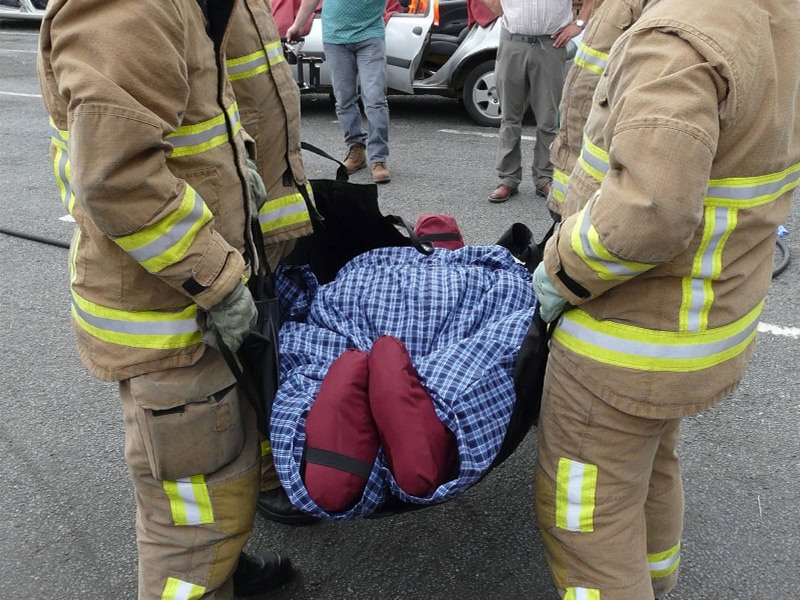In emergency or clinical settings, safely moving a patient from a stretcher to a bed—or vice versa—is a high-risk task for both the patient and healthcare staff. That’s where the medical emergency patient transfer carry sheet comes in. This simple yet vital device improves transfer safety, preserves patient dignity, and reduces caregiver strain.
What Is a Patient Transfer Carry Sheet?
A transfer carry sheet is a foldable, lightweight sheet made of durable materials used for moving patients horizontally. It is particularly useful in environments like emergency rooms, ICUs, X-ray departments, and maternity wards.
Typical Material Composition:
- Surface layer: Waterproof, wear-resistant nano nylon that is ultra-slippery to reduce friction.
- Core layer: Recyclable polypropylene (PP) board for structural support.
- Inner lining: EPE static-resistant foam for cushioning without deformation.
It is designed to be folded and stored easily, and can usually support weights up to around 150–160 kg while weighing only a few kilograms.

Key Benefits for Emergency Medical Use
✅ Minimizes patient discomfort during transfers from bed to stretcher, especially post-surgery or in trauma care.
✅ Reduces lifting effort—designed to facilitate sliding rather than lifting, helping prevent caregiver back injuries.
✅ Speeds up transfer process in critical scenarios like ER, ambulance loading, and fire rescue operations.
✅ Supports collaborative operation, typically featuring 6–8 hand grips so multiple caregivers can work in sync.

Step-by-Step: How to Use It Safely
- Adjust bed height: Make sure the bed and stretcher are aligned within a height difference of no more than 15 cm.
- Position caregivers: Two staff members stand on either side of the patient.
- Insert the sheet: Slide the sheet under one-third of the patient’s body by gently rolling them to the side.
- Reposition the patient: Carefully roll the patient back onto the sheet, ensuring the head and feet are fully on it.
- Perform the transfer: Coordinated lifting or sliding using the sheet handles or surface.
🔍 Watch this YouTube visual demo
Best Practice Tips
- Always use at least two trained caregivers.
- Do not use on uneven surfaces like stairs unless specified by the product.
- Regularly inspect for tears or surface damage before reuse.
Ideal Environments for Use
- Hospitals (ER, maternity, radiology, ICU)
- Ambulances and emergency vehicles
- Disaster relief zones
- Community clinics, elderly care homes
- Schools, sports facilities, public venues (for emergency kits)
Cleaning & Storage Recommendations
- Wipe the nylon surface with warm water (≤32°C) and neutral detergent.
- Disinfect after each use.
- Store in a dry, ventilated space away from direct sunlight.

Frequently Asked Questions (FAQ)
Can one person use a carry sheet alone?
It is strongly recommended to have at least two people for safety and control.
Can it be reused?
Yes, provided it is cleaned and checked for integrity after every use.
Is this the same as a spine board?
No. A carry sheet is soft and flexible, designed for lateral transfers; a spine board is rigid and used for immobilization.
Where can I learn more about emergency transport best practices?
Visit NCBI’s transfer safety article or NIOSH safe-lifting guidelines.
Conclusion
A medical emergency patient transfer carry sheet is one of the most underrated tools in a healthcare facility’s emergency preparedness toolkit. It enhances the quality of care, reduces patient pain, and protects the musculoskeletal health of staff.
👉 Explore professional-grade carry sheets and other rescue equipment at JieKang Rescue Equipment
📩 Contact the JieKang team for questions, customization, or bulk orders.



